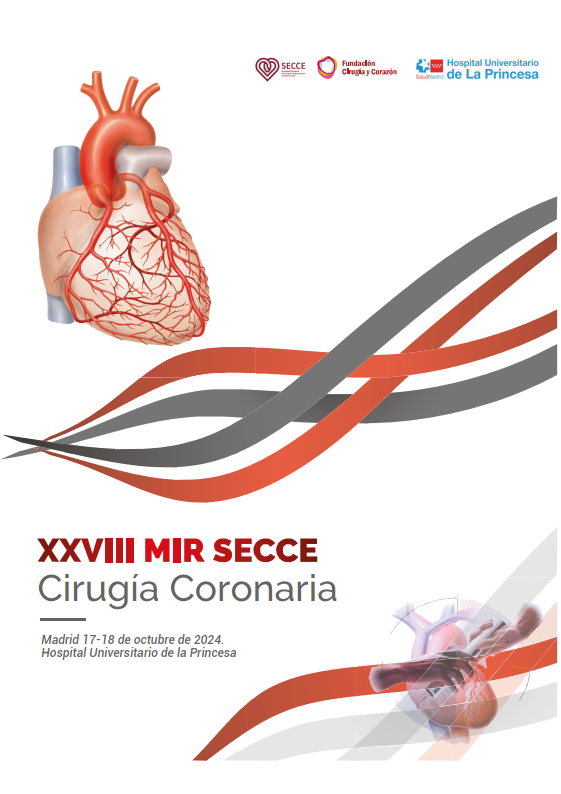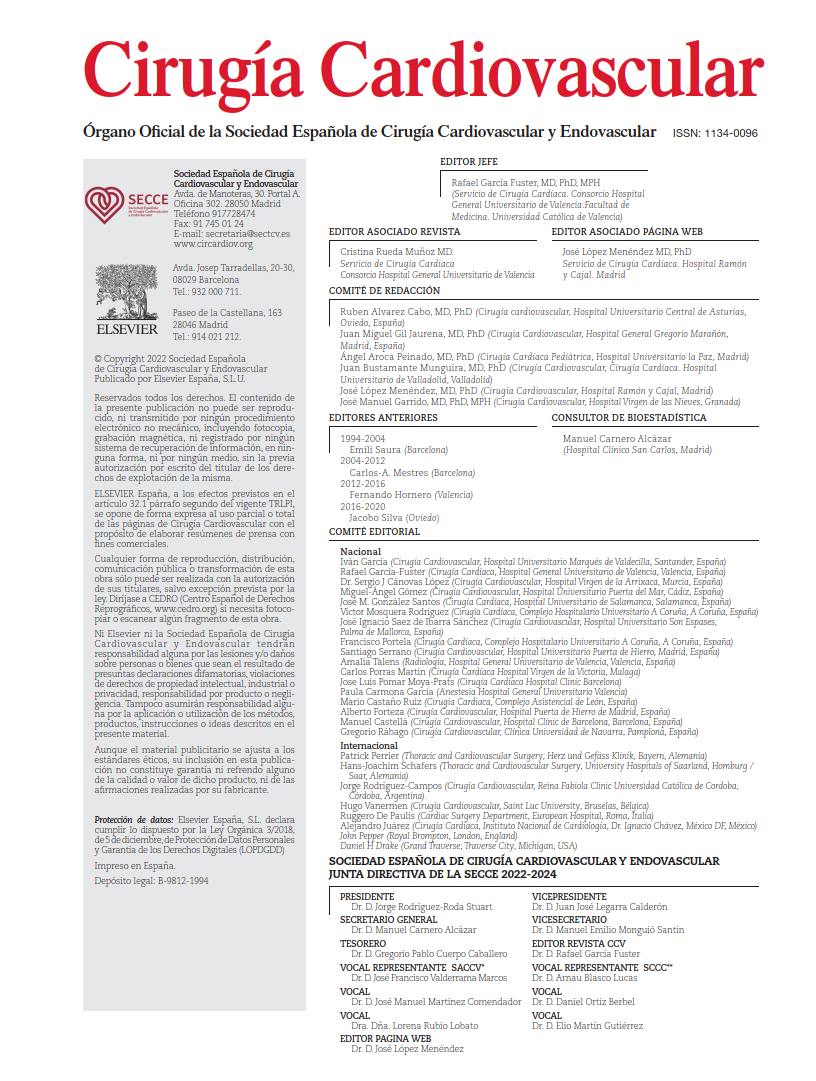The increasing number of patients supported by long-term left ventricular assist devices (LVADs)—either as a bridge to transplant, destination therapy, or durable mechanical support—has made device explantation an essential skill for any cardiac surgeon working in a transplant center. Although the HeartMate 3 (HM3) has represented a significant advance in terms of durability and safety, its explantation during orthotopic heart transplantation remains technically challenging.
This commentary is based on a step-by-step tutorial video showing the complete explantation of an HM3 during heart transplantation. Throughout the commentary, we also discuss recent studies addressing various surgical strategies, including minimally invasive access routes, apical closure methods, and clinical outcomes following explantation or device exchange.
The video illustrates the explantation of an HM3 in the context of orthotopic transplantation using a modified bicaval technique. The procedure begins with a careful resternotomy using an oscillating saw, following standard protocols and guided by preoperative computed tomography (CT). At the Hannover center, during the initial HM3 implantation, the entire outflow graft and driveline are wrapped in a Gore-Tex patch sutured to the pericardium (illustrated at minute 1:23), which greatly facilitates plane dissection during reoperation.
The outflow graft is mobilized using electrocautery, following careful dissection of the distal ascending aorta, which is prepared in case urgent cannulation becomes necessary. Next, bicaval and aortic cannulation are performed as in any orthotopic heart transplant (cannulation diagram and its relation to the outflow graft at minute 3:35). Cardiopulmonary bypass is initiated in coordination with the donor retrieval team. At that point, a ligature is placed around the outflow graft and clamped, which allows the HM3 to be safely turned off (minute 3:50). This facilitates continued dissection of the outflow graft toward the apex with improved exposure. Once the aortic cross-clamp is applied (minute 4:44), the outflow graft is transected and a vent is inserted through it to decompress the left ventricle.
In the following phase, the recipient’s heart is explanted (from minute 6:06 to 9:21), following a sequence similar to a standard transplant, with some specific features. The aorta is transected below the anastomosis with the outflow graft, which is subsequently resected. After transecting the superior vena cava, aorta, and pulmonary artery, dissection is completed around the apex, the HM3 body, the driveline, and the lateral chest wall (illustrated at minute 8:17). At minute 8:56, a full image of the explanted heart with the device still in place is shown, which is particularly illustrative. At this point, meticulous hemostasis of the device pocket is performed before proceeding with donor heart implantation.
The video proceeds with the implantation of the donor cardiac graft (from minute 9:21 to the end), without highlighting significant technical differences, except for the fact that this group performs the superior vena cava anastomosis as the final step of the procedure.
COMMENTARY:
The narrated video serves as an excellent visual guide for the HeartMate 3 explant technique during orthotopic heart transplantation, providing a clear, reproducible, and highly didactic approach. Its value lies not only in the stepwise depiction of the surgical sequence, but also in its emphasis on key technical details that enhance safety and efficacy.
One of the most relevant aspects is preoperative planning. Resternotomy in the presence of an intracorporeal device such as the HM3 requires computed tomography imaging to accurately define the spatial relationships between the sternum, outflow graft, and driveline, allowing anticipation of potential complications. In high-risk patients, having a femoral access ready for peripheral cannulation can save time and avoid major adverse events. Early control of the outflow graft—approached along its most accessible course before cardiopulmonary bypass—is essential for safe clamping and facilitates subsequent cardiac exposure.
Driveline disconnection should be performed with heavy scissors once cardiopulmonary bypass has been established and during the explantation phase. Several studies concur that this area may pose particular challenges due to dense adhesions that develop along the subcutaneous tract, especially in long-term implants. Incomplete or traumatic driveline excision may increase the risk of bleeding or infection; thus, careful identification, stepwise dissection, and complete removal must be part of a meticulously planned strategy. Furthermore, some reports have warned that leaving remnants of the driveline in situ—as may occur with less invasive or percutaneous techniques—could be associated with a higher risk of chronic infection or thrombosis, reinforcing the need for complete explantation whenever feasible.
Once the device has been removed, one of the most important insights from this technique is the emphasis on meticulous hemostasis of the device pocket. This step, often underestimated, can directly impact immediate postoperative outcomes. The use of electrocautery and argon spray prior to implantation of the donor heart helps prevent persistent bleeding. In non-transplant settings, such as in patients with myocardial recovery, various safe and reproducible techniques for apical closure have been proposed. The double-patch method described by Bhadra et al. provides a mechanically robust solution, while the experimental use of a silicone plug molded to the apical sewing ring, proposed by Elbayomi et al., opens new possibilities for even less invasive strategies.
The SWIFT study provides strong evidence supporting thoracotomy as a safe alternative to conventional sternotomy for HM3 implantation. This approach may enable cleaner, less traumatic explants in the future, especially in young patients or those with complex anatomy. However, despite avoiding severe mediastinal adhesions, thoracotomy is not without technical challenges. During explantation, rib fractures, muscular deinsertions, or partial injuries to the thoracic cage are not uncommon—particularly in prolonged implants or anatomically difficult patients. In such cases, meticulous structural repair at the end of the procedure is crucial, including proper rib repositioning, soft tissue reconstruction, and intercostal bleeding control. Hemostasis of the thoracic cavity—especially in areas with adhesions or bone trauma—is essential to prevent complications such as persistent bleeding or pleural collections.
During dissection of the heart and device components, a key recommendation is to avoid injury to the left phrenic nerve, which may be hidden within dense adhesions. To minimize this risk, direct thermal energy should be avoided, unnecessary traction should be limited, and natural dissection planes must always be respected.
Drawing on our experience at the University Hospital of A Coruña (CHUAC), we would like to highlight a few variations compared to the surgical technique shown in the tutorial video:
- We do not use Gore-Tex patches to cover the outflow graft, as we consider this may increase the risk of local infections.
- In all patients, cardiopulmonary bypass is established via femoral access prior to performing sternotomy. This strategy allows for a safer and more efficient chest entry and dissection throughout the entire HM3 explantation, while also optimizing coordination with the donor retrieval team. In cases with local donors—particularly following the recent implementation of controlled donation after circulatory death (DCD) protocols in Spain—this joint planning enables even more precise timing, making such donors ideal candidates for patients on the transplant list supported with an HM3.
In summary, this video, complemented by current literature, offers valuable practical insights for the surgical community. The goal is not only to follow a technical sequence, but to incorporate key details that, when applied rigorously, can reduce complications and improve outcomes in increasingly common and complex procedures such as HeartMate 3 explantation.
REFERENCES
Rzhanyi M, Woll G, Sandoval Martínez E, Ascaso M, Pechenenko A, Quintana E. Cardiac transplantation after HeartMate3. Multimed Man Cardiothorac Surg. 2024 Sep 24;2024. doi: 10.1510/mmcts.2024.006. PMID: 39315429
Niamat J, Ramjankhan F, Van Der Kaaij N, Gianoli M, Van Laake LW, Mokhles MM. Outcome after left ventricular assist device exchange. Eur J Cardiothorac Surg. 2024 Oct 1;66(4):ezae317. doi: 10.1093/ejcts/ezae317. PMID: 39235928; PMCID: PMC11486500.
Gosev I, Pham DT, Um JY, Anyanwu AC, Itoh A, Kotkar K, et al. Ventricular assist device using a thoracotomy-based implant technique: Multi-Center Implantation of the HeartMate 3 in Subjects With Heart Failure Using Surgical Techniques Other Than Full Median Sternotomy (HM3 SWIFT). J Thorac Cardiovasc Surg. 2024 Nov;168(5):1474-1484.e12. doi: 10.1016/j.jtcvs.2024.02.013. Epub 2024 Feb 15. PMID: 38367698
Bhadra OD, Pausch J, Aubin H, Akhyari P, Lichtenberg A, Barten MJ, et al. Reichenspurner H, Bernhardt AM. Left ventricular assist device explantation using a new double-patch technique†. Interdiscip Cardiovasc Thorac Surg. 2023 Jul 19;37(1):ivad110. doi: 10.1093/icvts/ivad110. PMID: 37486261; PMCID: PMC10371393.



